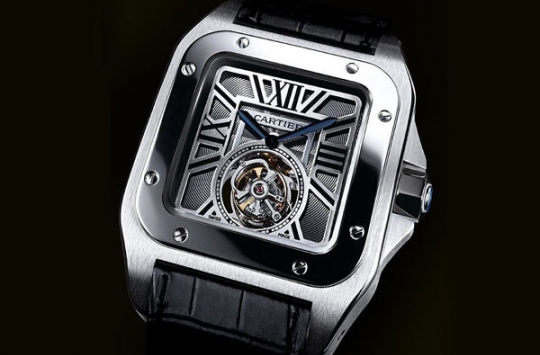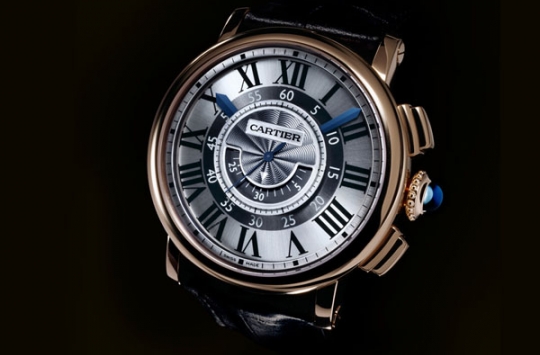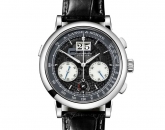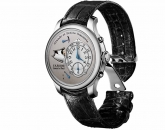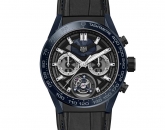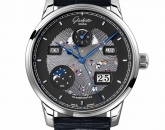Cartier is a word that’s always on everyone’s wish list. There’s nothing like the sight of that big red box with gold letters to get you in an adoring, obliging, extremely jovial mood. A household name for luxury, Cartier has been the constant companion of the world’s rich, royal and famous since 1847. And if you know most of the stories about their fantastic jewels, you would have undoubtedly heard how the brand put itself on the watchmaking map.
Six years after starting up the business in Paris, Louis-Francois Cartier added timepieces to his fine jewellery line in the form of pocket watches and ladies jewellery. But it was his grandson Louis that made history when he designed the first ever wristwatch for men in 1904, an idea he got from his friend and aviator Alberto Santos-Dumont, who complained about the impracticality of pocket watches in flight. And the Santos, with its distinct square bezel and Roman numeral indices, has been a trademark for the brand ever since.
The Santos was quickly followed by a number of iconic models that are still being produced to this day: the Tonneau in 1906, Tortue in 1913 and the Tank in 1917. Movements were assembled in France and made in Switzerland, with many innovative complications resulting from the collaboration between Louis Cartier and Edmond Jaeger of Jaeger-LeCoultre.
Cartier has since undergone many changes, including its acquisition by Joseph Kanoui and Robert Hocq in 1972 which eventually led to its being part of the Richemont Group. But one of the most exciting for its watchmaking heritage is definitely the achievement of being able to fully create its movements in-house, or for those who are following the industry closely, its evolution into becoming a “true manufacturer.”
It was in the midst of the quartz revolution in the 70s, when Cartier decided to work toward fully controlling its movement production.
But it was only in 2003 that the brand achieved this with a fully integrated manufacture at La Chaux-de-Fonds, alongside a tourbillon workshop in Geneva. Since then the company has focused on the development and production of movements for its exclusive line of watches. Last year we saw the release of the Ballon Bleu with the 9452 MC calibre, a watch with a one-minute flying tourbillon and a C-shaped carriage at six o’clock Cartier’s emblematic movement with the Geneva Seal. This year, the 9452 MC has been used with two models, the Tank Americaine (HK$725,000) and the Santos 100.
Led by its head of high watchmaking movements, Carole Forrestier- Kasapi – who incidentally is considered a powerhouse in the industry given her contributions to the development of Ulysse Nardin’s Freak, Audemars Piguet’s Grand Sonnerie, and A. Lange & Sohne’s Pour Le Merite Tourbillon – Cartier released an even bigger surprise this year with the Rotonde de Cartier Central Chronograph (HK$249,000), which features an entirely new in- house movement, the 9907 MC, equipped with a unique display in which the minute and hour counters are co-axial in the centre of the dial. It has also been constructed with a vertical coupling system for the chronograph function which reduces friction and energy consumption. Very well-received at the SIHH, the Rotonde de Cartier Central is a real beauty up close.
The iconic Santos 100 (HK$365,000) has also been revamped this year, with an innovative skeleton movement developed entirely in-house, the 9611 MC. Graphically striking in its oversized palladium case, this new model has a movement that was designed in the form of Roman numerals, so that what you see as indicators are actually the bridges, wheels and other parts of the manually winding calibre.
Says Helene Poulit-Duquesne, Cartier’s marketing director, “the team chose the skeleton because we felt that it was representative of how Cartier has been making its watches. Cartier does not do things like everyone else, especially in the way the movement is done. The process is very traditional yet there is always something new in terms of design.”
So where does Cartier go from here? Duquesne reveals that Maison Cartier has a five-year plan in the works to expand its in-house production further. “We have plenty of ideas for a new movement. Next year, you should be seeing something astonishing.”
Click here to see the published article.



